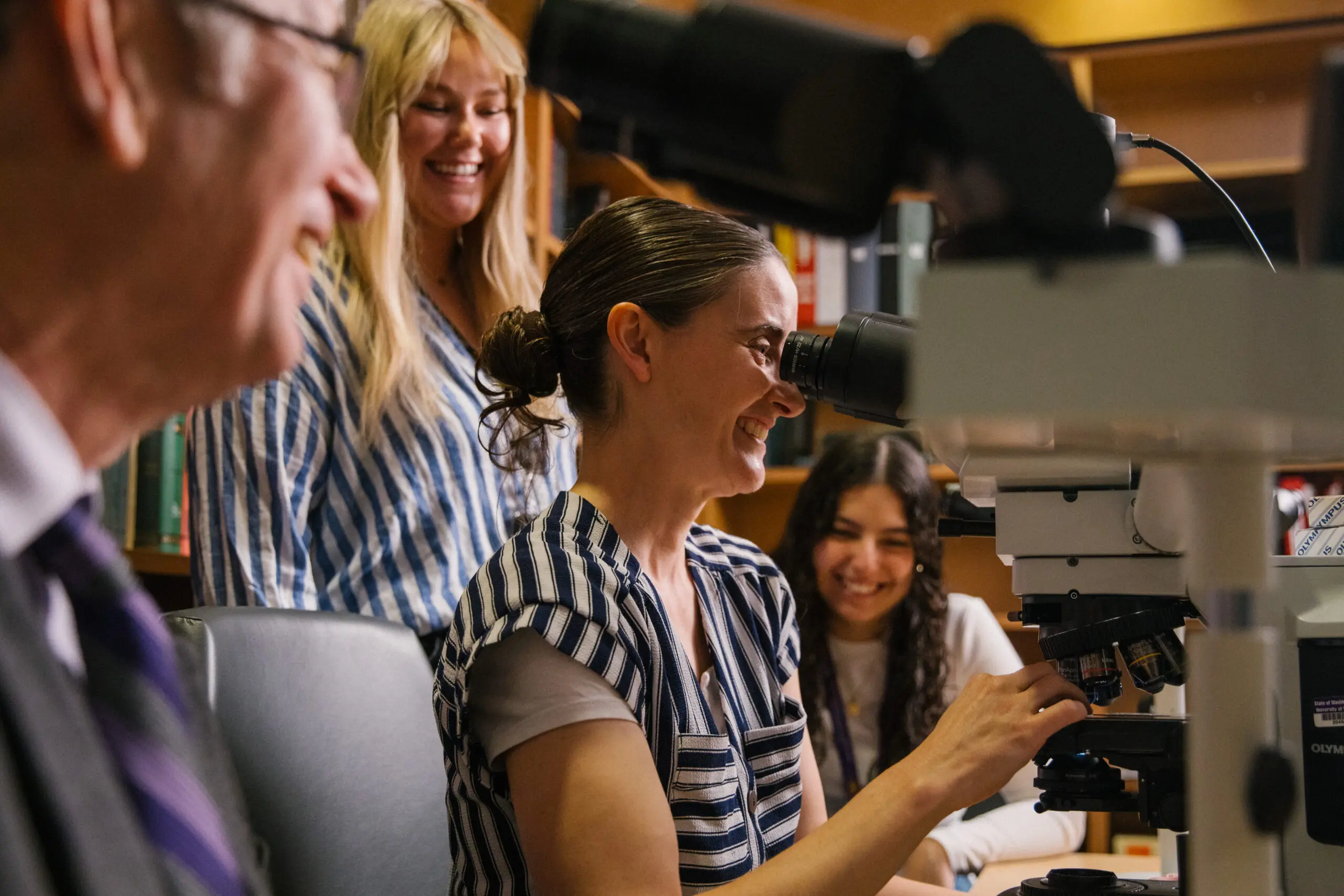When a baby died with multiple broken bones a few years ago, the horrifying but reasonable conclusion was that abuse, parental abuse, was the most likely cause of death. Alumnus and Seattle-based forensic pathologist Carl Wigren, M.A. ’97, M.D. ’01, Res. ’05, provided another possible diagnosis.
Wigren examined the child. Noticing something odd about the baby’s eyes — the whites had a blue-gray hue to them — he suggested a blood test.
For the child’s grieving parents, the stakes could not be higher. And science proved them innocent. A genetic test showed their baby had a type of osteogenesis imperfecta, also known as brittle bone disease. The child’s death, though tragic, had been brought about by natural causes.
As a forensic pathologist, this is what Wigren is trained to do — to determine the cause and manner of death and the precise way that injuries affect the body.
It wasn’t a profession that Wigren had planned on, but he remembers the exact moment when he knew he found his calling. He was in the morgue of the King County Medical Examiner’s office the summer before his fourth year of medical school.
“The first day, there were 13 dead bodies,” says Wigren, whose curiosity was piqued by the experience. “The medical investigators told us how each particular person had ended up in the morgue that morning. There was such a range of reasons.”
Today, Wigren still spends time in the morgue, conducting autopsies. The procedure starts with a physical exam. “We remark on hair color, eye color, any injuries, tattoos, piercings, things that will help identify the individual if there is ever a question,” Wigren says.
Then he does an internal examination of the organs, often followed by a review of medical records, police narratives, interviews and scene photographs. It’s not unusual for him to sift through two or three thousand pages of medical records for each case.
“We see a moment in time when a person is on our table. But we look at the totality of everything about that person’s life, and we put it together,” says Wigren.
“Ironically, gathering all this data makes the person who is dead kind of come alive,” he says.
Occasionally, Wigren visits a place to determine if a death was natural or accidental. He also interacts with specialists to confirm how various injuries — from a gunshot, a blow from a blunt object or a drug overdose — might affect a particular organ.
Although many forensic pathologists work for medical examiners’ offices, Wigren runs his own consulting business, serving as a second set of eyes for coroners, attorneys and families who want to make sense of a sudden or unexpected death. Sometimes, he even testifies in court.
In all that he does, however, Wigren has one objective in mind.
“I’m there to look at the material and search for the truth,” he says.
Note: To protect the privacy of the people involved, the vignette that opens this story is a composite of a few of Wigren’s cases.

